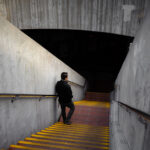Shock verdicts remain on the rise nationally. They are generally recognized as awards exceeding $10 million that often defy rationale in relation to actual damages. These nuclear verdicts tend to occur in jurisdictions considered judicial warzones, such as Nevada, Pennsylvania, Georgia, Illinois, California, New York City and others. However, their impact resonates across the country. A corollary to the rise in shock verdicts, particularly since the COVID-19 pandemic, is the significant escalation in settlement amounts.
Various factors are at play in the rise of shock verdicts and the increasing settlement costs. They include economic and social inflation (we’ve coined “billion is the new million”), distrust of authority, anti-corporation sentiment, widespread media coverage and increasingly effective tactics of plaintiffs’ counsel, such as expanded use of the Reptile Theory. Managing litigation effectively from its initial stages and seeking early resolution is essential in mitigating potential shock verdicts and shock settlements. Moreover, everyone involved in the litigation must employ the latest technology and resources to level the playing field with the plaintiff’s bar.
The plaintiffs’ bar is well-organized nationwide and continues to use recent significant verdicts as leverage for settlement. Attorneys pick and choose the “right” cases to take to trial to obtain a substantial verdict; the cases routinely have bad facts, poor defense witnesses, and credible, likable and sympathetic plaintiffs. Successful verdicts are then leveraged in similar matters to gain a significant settlement. In Nevada alone, there have been four verdicts over $10 million since 2021 and two matters where the amount awarded was over ten times the actual damages.

There have been nearly 1,400 nuclear verdicts in the past 10 years, with half garnering verdicts between $10 million and $20 million, one-third realizing between $20 million and $50 million and the remaining verdicts exceeding $50 million, with 105 decisions exceeding $100 million. Given these trends, shock verdicts are anticipated to continue to increase in number and damages paid, providing more ammunition for the plaintiffs’ bar in seeking high settlements.
Plaintiffs’ Bar Tactics and the Reptile Theory
In conjunction with tactics and techniques to instill fear in the jury to obtain significant awards, including the Reptile Theory, the plaintiffs’ bar seeks to set up the potential for adverse inferences and other sanctions through discovery to hamper defendants’ abilities at trial further. Examples include motions for spoliation for evidence that is unavailable when discovery commences, often made years after the incident, and motions for untimely disclosure of evidence, even if discovery is ongoing and the plaintiff has not explicitly requested the evidence.

Another tactic is the regular and rapid filing of motions to compel, to try and show a lack of cooperation by a defendant. This motion practice can lead to minor sanctions, such as an order to compel and monetary sanctions, that can progressively build towards case-ending sanctions.
The best way to circumvent these tactics is to handle claims proactively. The process should begin as soon as an incident occurs, even if medical attention is denied. (It is not unusual for claimants to seek medical treatment later in the day following an incident, especially in auto accident cases.) If an injury is claimed at the scene, counsel should be retained to assist with the investigation and ensure that all evidence is obtained at the outset and correctly preserved.
Guidelines for Incident Investigations
Incident Occurs
Obtain contact information for all witnesses, in addition to a statement.
- Statements obtained at the scene of an incident are often inadmissible as evidence. It is imperative to be able to contact witnesses to provide live testimony. Locating witnesses years later can prove impossible if not correctly identified.
Obtain all video footage and photographs of the incident ASAP.
- Even if the insured has obtainable surveillance and dashcam video, other images or video should be identified. Examples include dashcams, phones of witnesses, local businesses and neighbors, and traffic camera images potentially containing vital information that can be lost or erased.
Obtain data downloads of all vehicles involved ASAP.
- Most vehicles today have data download capabilities that can be lost over time. Make no assumptions regarding the downloaded data during the repair process. Also, if a vehicle is not damaged and will continue to be used, any pertinent data may be lost. Additionally, a later inspection may reveal damage after the accident, the timing of which can be challenging to prove. Thus, a critical first step is ensuring the vehicle is not used until a data download is complete, along with an inspection of the vehicle documenting any damage.
Obtain relevant insured documents:
- Policies and procedures relevant to the claim (driver training, cleaning procedures, etc.).
- Employee files, including training and disciplinary actions of any employees involved in the incident.
- Information on similar incidents occurring up to five years before the incident.
Claim Filed and Attorney Retained
Promptly respond to a preservation of evidence demand.
- Counsel should ensure that all potentially relevant evidence is preserved, avoiding the plaintiffs’ bar’s standard tactic of sending a preservation letter but later claiming items were not adequately preserved and seeking sanctions for spoliation of evidence.
- To prevent later claims of spoliation, counsel can respond and advise of potential issues and the necessity for an immediate inspection of items.
Respond to a policy limits demand.
- Another tactic by the plaintiffs’ bar is the policy limits demand, which will later be used to seek a settlement above the policy limits.
- Responses should be detailed, explain the impropriety of the demand and provide the necessary information required to assess the claim.
It is imperative to follow the steps above from the outset of the claim to show due diligence, thwart tactics designed to undermine the defense and mitigate future issues the plaintiffs may seek to exploit to gain a larger settlement or verdict.
By taking these proactive steps, counsel can assess liability, causation and damages early. This allows for pursuing settlement in the preliminary stages, placing pressure on plaintiffs to resolve immediately for a reasonable sum instead of waiting years for litigation to commence and discovery to go forward before compensation.
Getting the plaintiff to the table early, faced with real money versus the stress and uncertainty of litigation, removes the significant leverage the plaintiffs’ bar achieves through discovery tactics and raising prior jury verdicts when seeking a settlement. In addition, early mediation can prove helpful as the neutral can educate the plaintiff on the benefits of settling a claim sooner than later.
If claims do not resolve early and litigation commences, the defense is encouraged to litigate proactively instead of reactively. When it comes to discovery and preparing for trial, it’s crucial to case development and ongoing settlement evaluation that the defense uses focus groups and “big data,” as plaintiffs are doing nationwide.
While these resources and exercises are time-consuming and expensive, they are essential to level the playing field in large exposure cases. They also allow for a meaningful determination about which future matters to take to trial that are likely to obtain favorable defense verdicts and combat nuclear verdicts.
Bashor is a partner with the law firm Wilson Elser in the complex tort and general casualty practice. She focuses on crisis management and catastrophic high-exposure cases. She is based in the firm’s Las Vegas office. Email: karen.bashor@wilsonelser.com
Wyatt is of counsel with the law firm Wilson Elser. She defends clients in litigation ranging from premises liability to commercial transportation, professional malpractice and automobile accidents. She is based in Las Vegas. Email: elisa.wyatt@wilsonelser.com
Was this article valuable?
Here are more articles you may enjoy.

 ‘Dream Is in Sight:’ Chamber, Reinsurers, Insurers Urge Florida to Stay the Course
‘Dream Is in Sight:’ Chamber, Reinsurers, Insurers Urge Florida to Stay the Course  NYT, Chicago Tribune Sue Perplexity AI as Copyright War Rages On
NYT, Chicago Tribune Sue Perplexity AI as Copyright War Rages On  Zillow Deleting Climate Risk Scores Reveals Limits of Flood, Fire Data
Zillow Deleting Climate Risk Scores Reveals Limits of Flood, Fire Data  Truckers Who Fail English Tests Get Pulled Off Roads in Trump Crackdown
Truckers Who Fail English Tests Get Pulled Off Roads in Trump Crackdown 